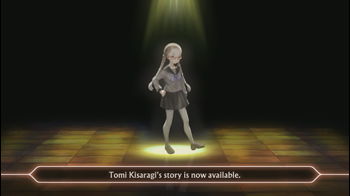
13 Sentinels: Aegis Rim Review
Whoever is reading at this very moment, I envy you. Chances are, you’re reading this to find out if this video game is good or not. That means you probably haven’t played 13 Sentinels: Aegis Rim yet, and I’m jealous.
As soon as I finished 13 Sentinels, I immediately wished I could play it again for the first time, not knowing anything. You only get to experience this kind of narrative once. I’m going to level with you. After several weeks of playing through and thinking about this game, I firmly believe this is one of my favorite games ever - and I do not say that lightly about games in general.
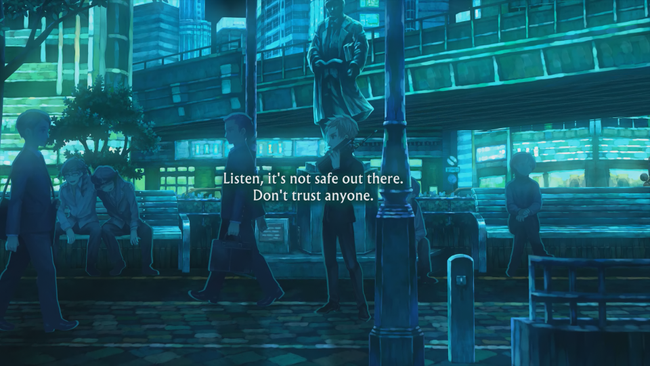
Vanillaware is coveted for their fast, responsive action RPGs; many often point to the Muramasa Rebirth and Odin Sphere: Leifthrasir re-releases or Dragon’s Crown as shining examples of what the pinnacle Vanillaware experience is. I think 13 Sentinels is my new favorite Vanillaware game, even though it is such a radical departure from what the developers have previously done. Fans of the company should be aware that 13 Sentinels is not an action RPG. I’d best describe it as an interactive, time traveling visual novel adventure with real-time strategy gameplay sections.
Past Vanillaware titles often featured fleshed out gameplay systems at the cost of relatively simple stories. This straightforward approach isn’t a bad thing, yet I want to be perfectly clear that 13 Sentinels is a very different kind of game that longtime Vanillaware fans may not be expecting. There is a lot of reading and watching scenes play out; hours will disproportionately be in favor of witnessing the plot unfold over the “gameplay” segments. I love this game to pieces, but this is not a game for everyone.
13 Sentinels is a tremendous love letter to science fiction at its core. Beneath the game’s premise of Japanese high schoolers piloting giant robots to fight off a mysterious kaiju invasion lies one of the most intricate narrative webs I’ve seen weaved into a video game. It borrows elements from a ton of popular sci-fi properties around the world; if you’re a big sci-fi enthusiast, 13 Sentinels is absolutely up your alley. Yes, there is a device that has a stun or kill setting.
What’s more impressive is that it combines so many sci-fi tropes to tell an engaging story in a way that only the medium of video games can effectively convey.
After a clumsily structured prologue that introduces 7 of the 13 protagonists with brief tutorials of the RTS battles between each of them, the game properly opens up and splits into three modes: remembrance, destruction, and analysis. Remembrance goes into the 13 protagonists’ stories, destruction has all the RTS battles, and analysis is a useful information hub that archives events along with key terms. The modes all work in tandem with one another; players will have to engage with all of them at some point to advance the game.
As you may have surmised, remembrance is the primary focus of 13 Sentinels. Instead of the prologue’s linear delivery, it lets players decide which stories they want to see unfold first. This decision isn’t as big of a commitment as you may be led to believe. Every segment of a character’s story route is broken up into small episodes; players will only be spending roughly 20-30 minutes on average before they’re taken back to the character select screen.
This doesn’t mean that not a lot happens within that time frame though. What I adore about 13 Sentinels is its excellent management of pacing revelations in a digestible manner. It finds ways to avoid dragging out scenes unnecessarily by presenting its plot in these chunks.
Thanks to the remarkable cast, the episodic-esque approach is outstanding. Players will get insight to the characters not only from their perspectives, but from multiple alternative viewpoints from other characters. There are numerous instances in the game when events will seem like they occur out of nowhere, and going down another character’s story provides context of why things played out the way they did. Some stories inevitably paint specific characters in a negative light, while that character’s story route will provide critical background information to fill out where they’re coming from.
Little things like this help flesh out 13 Sentinels’s characters naturally and organically. By the end, I loved the entire cast and left satisfied in how Vanillaware treated them once everything was said and done. The entire game is fully voice acted; at the time of this review, I only had access to the Japanese voices and the English voices will be coming in a day 1 patch.
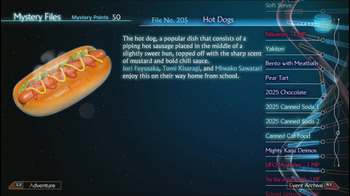
Due to the nonlinear nature deciding who and when to proceed, people will naturally learn about important events at different times that will directly affect how they perceive events they have yet to unravel. Therefore, every player’s thought process will practically be mutually exclusive, and I think it is utterly fascinating that 13 Sentinels can pull that social dynamic off. Based on the events I witnessed first, my way of thinking, my theories, and my angle when connecting-the-dots of what I thought might be going on will differ from anyone else’s and that... is incredible. A lot of the charm in 13 Sentinels boils down to discovering things you don’t know in your own way at your own pace with your own preconceived notions. It’s challenging to describe how rewarding this felt as I played this game for myself and I hope people encounter this certain feeling as well.
Anyway, players will be speaking to others throughout each character’s stories and obtaining keywords for their Thought Cloud; it banks keywords for further consideration and at times, you can utilize specific ones on a character or object. There isn’t much room for trial-and-error experimentation, like older PC adventure games that allowed for trying anything on everything. 13 Sentinels is streamlined in a way to keep it moving forward with minimal hang-ups.
As you progress the tale of each character, their own flow chart gradually fills up to easily track what you have and haven’t seen for them yet. Some have branching paths and others only have linearly structured charts. Sections of the flow chart that haven’t been uncovered tend to give helpful tips on how to unlock them. It either provides you a small hint of what to try differently or highlights what missing keywords you need to unlock it, though it also has a tendency to not give a clue at all too. Thankfully, nothing extremely tedious or convoluted is essential to find the way forward. Sometimes all it takes is merely choosing that same character again and things will just play out differently from the get-go. Nevertheless, the game could do a better job surfacing that.
An aspect that 13 Sentinels shares with previous Vanillaware entries is the unmistakable visual direction that Vanillaware is lauded for. Although company founder George Kamitani is usually involved with the character designs in Vanillaware’s titles, his hands were full solely directing and writing the game’s massive script. Instead, artists Yukiko Hirai and Emika Kida stepped up to the plate and did an astounding job preserving the look and feel of Vanillaware’s signature style.
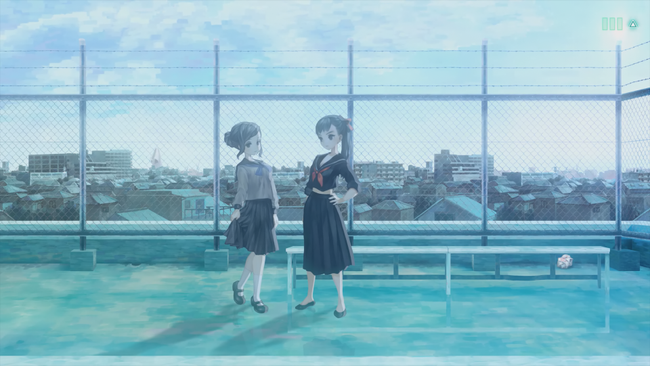
Much like other Vanillaware works, it shares the sensation of paintings coming to life. I feel that 13 Sentinels is a considerable step above the rest nonetheless. Each of the protagonists and numerous side characters have distinct appearances, personalities, and mannerisms. I was taken back a bit with the attention to detail in how expressive characters are in 13 Sentinels compared to the developer’s past titles.
The audio work is especially noteworthy. Both 13 Sentinels’s soundtrack and sound design are exceptional in crafting a surreal atmosphere that instills wonder and curiosity. Hitoshi Sakamoto and the folks at Basiscape molded techno into all sorts of cadences and it bizarrely fits admirably. There is a comfortable subtle tone that meshes right at home with the sci-fi themes. It exudes a level of impact that never overtakes or steals the spotlight of a scene somehow; it only enhances them just right.
Vanillaware’s pivot from high fantasy eras previously to a modern city infrastructure in 13 Sentinels is gorgeous. There are moments in this game that left me staring at the background for a few minutes. 13 Sentinels is primarily set in a busy mid-80’s city in Japan, so you can expect to see a lot of bustling urban environments - which is a first for Vanillaware. What really surprised me is the sheer number of unique backgrounds; it’s one thing to have a handful of beautiful backgrounds, but I was awed at the scope of this game as it kept unveiling new scenery. Since time travel is such an important component in 13 Sentinels, this places a significant impact on the role of backgrounds with locations having past and future variants under a Vanillaware lens.
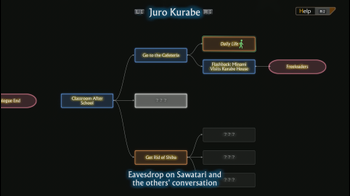
You won’t be able to finish everyone’s story right away in remembrance mode. Further progression is locked after certain points of each character’s route. In order to continue them, prerequisites are provided to free them up again. These usually fall under uncovering a certain event with another character, having multiple character routes reach a progression percentage threshold, completing a specified battle stage in destruction mode, or unlocking a number of terms in analysis mode. Everyone will have to engage with every aspect of 13 Sentinels to some extent, for better or worse.
Although I found the battles in destruction mode a weaker experience compared to the plot-heavy remembrance mode, it’s more elaborate than it initially lets on. All combat is relegated to destruction mode after the introduction bits are over; the compromise to split up the stories and battles into separate modes is probably the lesser of two evils, as odd as it may be. I didn’t like how combat sections were injected in-between characters’ prologues, so this worked a tad better than a glimpse of the alternative.
13 Sentinels turns into a RTS game when engaging in combat. Vanillaware has flirted with the genre before through the lovely GrimGrimoire, though it’s quite different here. The 13 protagonists all pilot their own massive mecha and only a max party of 6 can be deployed onto a stage. Objectives often consist of defending a terminal from incoming enemy waves - either hold out for two minutes or defeat all enemies before then. Two minutes doesn’t sound all that much, but it can get quite overwhelming in later battles. Boss stages switch things up by asking you to go on the offensive and taking out key targets to complete them. If the combat ends up not being your cup of tea, there are three difficulty options for battles and have no consequence if you choose to breeze through them on the easiest one.
As your units get deployed into the fray, you’ll be issuing commands of whether to attack, move, repair, or defend. Actions are done immediately once selected and time freezes when issuing them, so there’s no rush or pressure to rapidly click things. It’s easy to understand and relatively basic compared to other RTS games. Every protagonist’s robot has their own set of weapons to choose from; some may be more specialized in melee, ranged, or support roles. All sorts of weaponry is at your disposal from chainsaw blades, machine guns, railguns, sentry guns, drones, shield barriers, anti-air flares, or simply a good old punch and so forth. The more powerful a weapon, the longer the cooldown your character will incur until they can act again. You’ll get to see an attack’s effective range and what it’ll specifically hit before you choose to fire it off.

While the attack animation preview video clips are a treat to look at, the actual in-combat visualization is plain. It looks more like pieces of a tactical war table moving around. Despite this, the game does a great job conveying the immense scale and chaos of later battles - perhaps a bit too much to its detriment. Late game enemy waves spawn in hundreds upon hundreds of foes at times which, to my surprise, chugged my PS4 Pro down to 10-15fps briefly. This drastic performance decrease didn’t stick around for too long, but I imagine that clearing out vast swathes of these enemies as they spawned in almost immediately helped with that.
In destruction mode, there are different groups of stages to proceed through in order. You’ll have to keep an eye on who you decide to deploy. Don’t get too comfortable using the same team over and over again. Characters have a stress meter that fills up for each battle they partake in; when it completely fills up, they’ll enter a Brain Overload state that temporarily makes them unavailable to use for a stage. You can choose to recover all your team members at the cost of wiping your score multiplier though. In return, this’ll make it more difficult to get a better rank at the end of a stage - and that’s weirdly important too.
I mentioned earlier that some characters’ routes would be locked by how many terms you’ve unlocked in analysis mode. In order to do that, you’ll need mystery points, and the way to obtain the majority of those are performing well in battles to obtain S-ranks. These will reward new files in analysis mode as well. Additional bonus objectives open up more keywords in analysis mode; these often ask players to either complete the stage in a certain amount of time, deploying specific characters in the party, or restricting only certain types of robots to be used. Players can go back to replay completed stages at any time if they miss these the first time around. Once again similar to remembrance mode, progress in destruction mode is sometimes locked behind reaching an event in a character’s story.
No matter what, all players will have to finish destruction mode to see the end of the game. I was slacking a little on destruction mode progress because I was so engrossed with progressing each character’s tales. Eventually, the game will bottleneck you into completing all the battles you have left in order to see the ending. An additional set of stages are also unlocked after beating the game that have no story relevance; it’s there if you want to continue playing.
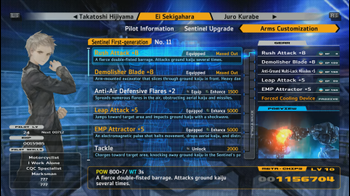
Other than that, you can expect all the bells and whistles of RPG progression systems in 13 Sentinels’s RTS mode. Characters level up and obtain passive skills the stronger they get. You can expand their arsenal by buying new weapons and enhancing them. There are also upgrades for core systems to help your team if they’re in a bind too, such as immediate heals or cooldown reductions. Unlocking more powerful weapons to purchase are behind higher levels of the core system too. Plus, you’ll eventually unlock the ability to funnel your resources into tweaking each character’s stats individually if you have the burning desire to min-max.
Character interactions important to the narrative do play out during the battles in destruction mode. They’ll often chatter to one another, and the context of these battles would’ve made them a challenge to integrate gracefully taking into account how remembrance mode is structured. Even so, it is hard to shake off the disjointed feeling surrounding it. I had my fun doing combat once in a while, but when it came time to wrap everything up, I was merely going through the motions chaining battle stages together. I found the tactics that worked for me, stuck with them, and did them again and again. There was little reason to deviate once I discovered which strategies did the job. 13 Sentinels’s battles have a cool vibe to them yet it still shares the problem of many Vanillaware games; it gets repetitive - especially when you push them off and learn they’re mandatory to see the ending.
Vanillaware is sometimes called into question for their risque art direction for their characters. They undeniably have a knack to unabashedly show skin for the viewer’s delight. This is most prominent during 13 Sentinels’s battles because boarding the colossal mechs causes the pilots to go nude. Every time they speak to each other from inside their robots, it’ll show off stylized portraits of them communicating. Some of the portraits for characters are admittedly more curvy or angled in a certain manner. Thankfully none of the characters are constantly making perverted remarks or ogling about it persistently. I figured a friendly heads-up wouldn’t hurt.
Obviously the analysis mode in 13 Sentinels is not filled with gameplay. As I noted earlier, this is essentially an archive of everyone and everything in the game that is constantly updated the more you uncover about them. Analysis mode serves as a good refresher not only for terms, but for events as well. 13 Sentinels is brilliant in how it presents itself even though the details are (intentionally) presented like a puzzle. There is a timeline in analysis mode that helps contextualize exactly when things played out relative to one another and you can rewatch the scenes at any time. Small touches like these really added up for me.
13 Sentinels: Aegis Rim is truly one of the most unique games I have ever played through. My 35 hours with Vanillaware’s latest title is something I wish I got back because I want to play it again for the first time. Kamitani explores so many interesting sci-fi ideas and philosophies in this title and they come together to form something magical. None of this would be nearly as impactful without the unconventional piecemeal storytelling scattered throughout the 13 protagonists’ perspectives. It is a narrative labyrinth that kept me intrigued the entire way. The execution of this game is masterful in its own right, fully utilizing what video game storytelling could be capable of. While the RTS battles drew the short end of the stick, what 13 Sentinels achieves in storytelling for video games is something to be celebrated and commemorated.
